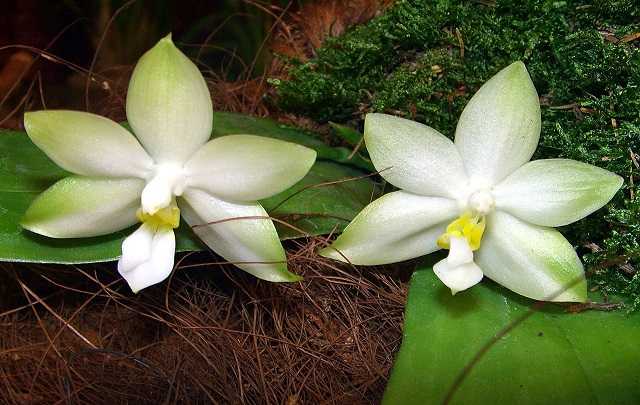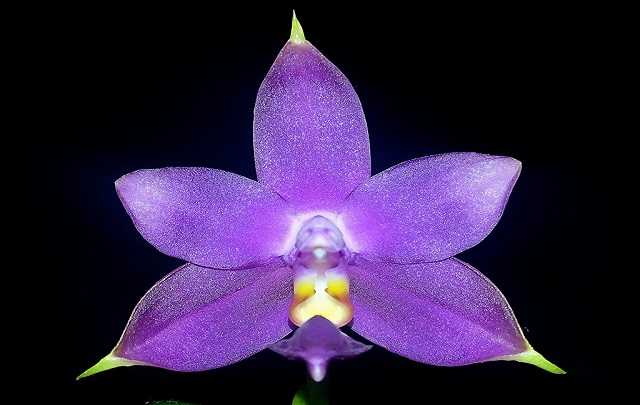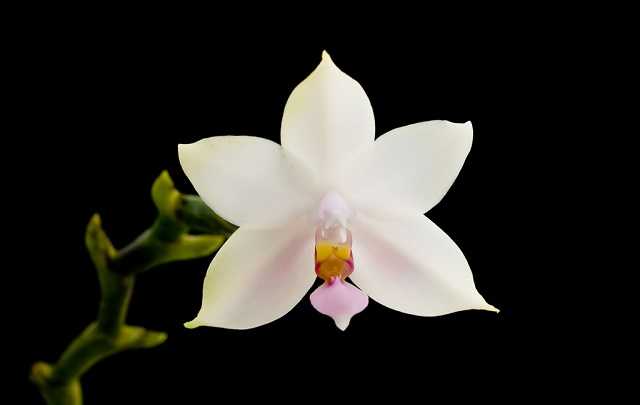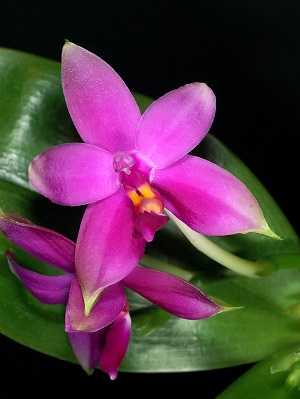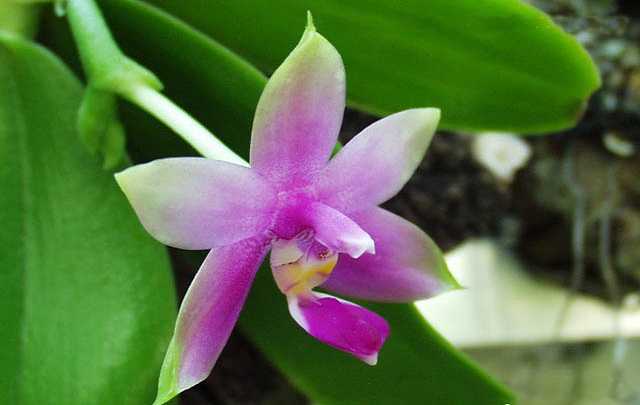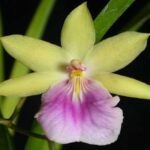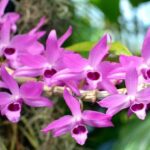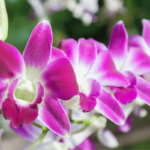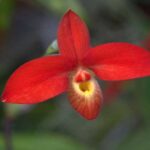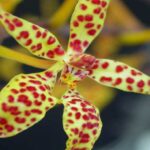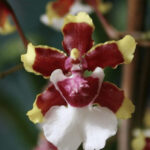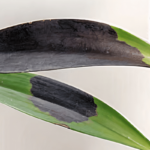Today we are going to talk about Phalaenopsis violacea, one of the most famous orchids in the phalaenopsis genus.
This orchid is an epiphytic plant that can be considered medium-sized, reaching up to 35cm (13.78 inches) in height.
Remember that epiphytic plants are those that live on trees.
They can be found in Asia, especially on the islands of:
- Andaman
- Nicobar
Usually found in countries such as Sumatra, Borneo, and Malaysia.
Phal. violacea is an orchid that lives at lower altitudes, being found in places from 150 to 200 meters (492 to 656 feet) above sea level.
Continue reading this article to discover interesting facts and cultivation tips about this orchid.
Learn How to Achieve Super Blooms on Your Orchids
🛑 If you love orchids and you're tired of not being able to make them bloom...
Then, know that thousands of beginner growers are achieving beautiful flowers on their orchids by following this method.
Click the button below to have beautiful orchids with show-worthy flowers every year. ⤵
Characteristics
You know that this plant was discovered more than 150 years ago?
It was found in 1859 by Johannes Teijsman and sent for analysis, and after 3 years, it was described as stauritis violacea. But in the same year, this description changed, and it received its current name, Phalaenopsis violacea.
The leaves are green and quite wide.
Thanks to its very strong and pleasant fragrance of its flowers, this orchid started to be used in the production of other plants.
Several interesting hybrids were created this way.
But besides that, there are also its natural variations, which orchid enthusiasts usually call types.
For example, the variation ‘alba’, which has completely white flowers, is called Phalaenopsis violacea var. alba.
Below are the main varieties of this orchid:
- Alba (white flowers)
- Coerulea (blue flowers)
- Indigo
- Bowringiana (transverse bars on flowers)
- Punctata (violet spots on flowers)
Although they are a bit different, the cultivation tips in this article will apply to all these varieties.
Fun fact: the species Phalaenopsis bellina is very similar to this orchid, but they differ in smell and also in their petals.
Flowers
Undoubtedly, the main difference between other phalaenopsis and violacea are the flowers.
While other plants have at most faint fragrances, violacea gifts us with a strong and pleasant perfume.
But that’s not all; its flowers are also very beautiful.
They usually appear in summer, opening two per floral stem. However, as this is a plant that does not have a resting period, it can bloom at any time of the year.
Altogether, more than 15 flowers per stem can appear, and the flowering can last more than 30 days.
The colors are varied, for example:
- Blue
- Violet
- Pink
- Red
- Pink and white
- Purple
- A shade very similar to brown
When flowering begins, the flowers start opening attached to the stem. Over time, they can reach up to 4 centimeters (1.57 inches).
And a tip: never cut the old stems, as they can bloom again.
Cultivation of Phalaenopsis Violacea
Just like all other phalaenopsis, this orchid is very simple to grow.
Therefore, it is very likely that any beginner grower can have them at home if they have a basic understanding of orchid cultivation.
But to make this task even simpler, below are tips on how to care for this species.
Humidity
Humidity is a very important factor that will help us prevent various diseases.
For this orchid, the ideal humidity varies between 50% to 80%.
To find out if the humidity is at the ideal level, you can buy a humidity meter or use weather forecast websites.
Another tip is to use a tray with water and gravel to increase humidity if necessary.
But remember that this tray should never be placed under your plant.
Temperature
Phalaenopsis violacea is a plant that really likes a medium or warm climate.
Therefore, if you live in a colder place, it might be a good idea to choose another orchid to grow.
Basically, to provide the correct temperature for this plant, you must take into account the seasons of the year.
- Summer: Day 25 to 29°C (77 to 84.2°F), Night 20 to 22°C (68 to 71.6°F)
- Winter: Day 20 to 22°C (68 to 71.6°F), Night 15 to 16°C (59 to 60.8°F)
Lighting
Just like most orchids, the lighting should be indirect.
But know that this is an orchid that likes a lot of light, so make sure it is placed in a well-lit location.
If you are going to use shade netting, choose those with 50% to 70% shading.
Another tip is to read the article spots on orchid leaves and learn how to identify when your plants need more or less light.
Where to Grow
If you make a mistake in this regard, you may end up losing your orchid, so pay attention.
This is an epiphytic orchid and, therefore, cannot be planted in the soil.
If you do this, it will die.
So choose one of these places to grow it:
- Trees
- Cache pots (orchid wood basket)
- Wooden slabs
- Clay pots
Do You Want to Learn How To Keep Your Orchids Healthy And Ready to Bloom Every Year?
So, I prepared a complete guide, step by step and illustrated, that will show you:
• The secrets to getting beautiful flowers every year
• How to fight and identify pests and diseases on your orchids
• THE MAGIC SUBSTANCE for orchids and how to use it
• And much, much more.
The great news is that the manual is now available at a super discount!!
But beware, it's only for the first buyers.
Click on MORE INFORMATION below and discover the secrets to show-worthy flowers. 👇
Soil
Phalaenopsis violacea really likes to be grown with its roots free.
So choose potting mixes with these two factors:
- Good drainage
- Good root aeration.
Some very interesting options that will work for violacea are:
- Coco chips
- Gravel
- Charcoal
- Sphagnum moss
Watering
Another very important factor when growing any orchid is watering.
If you do not water your plant correctly, it can have various problems, such as black rot disease.
To avoid this in phal. violacea, you should water it just before the substrate dries out.
To find this out, you can:
- Check the color of the roots: if they are silver-green, they are almost dry, so you can water.
- Put your finger in the middle of the substrate to see if it is dry.
And another important tip is not to let water accumulate on the leaves.
This accumulation can cause rot.
Conclusion
This was the guide on how to grow Phalaenopsis violacea.
If you have any questions or want to share with us any tips that were not mentioned in this article about growing this orchid, leave your comment below.
And if you want to learn more about orchids, check out the articles below:
- Orchid Care for Beginners: Quick and Easy 7-Step Guide
- Paphiopedilum Orchid Care: Everything You Need to Know
Liked this text? Then share it on your social networks by clicking on the icons below:

